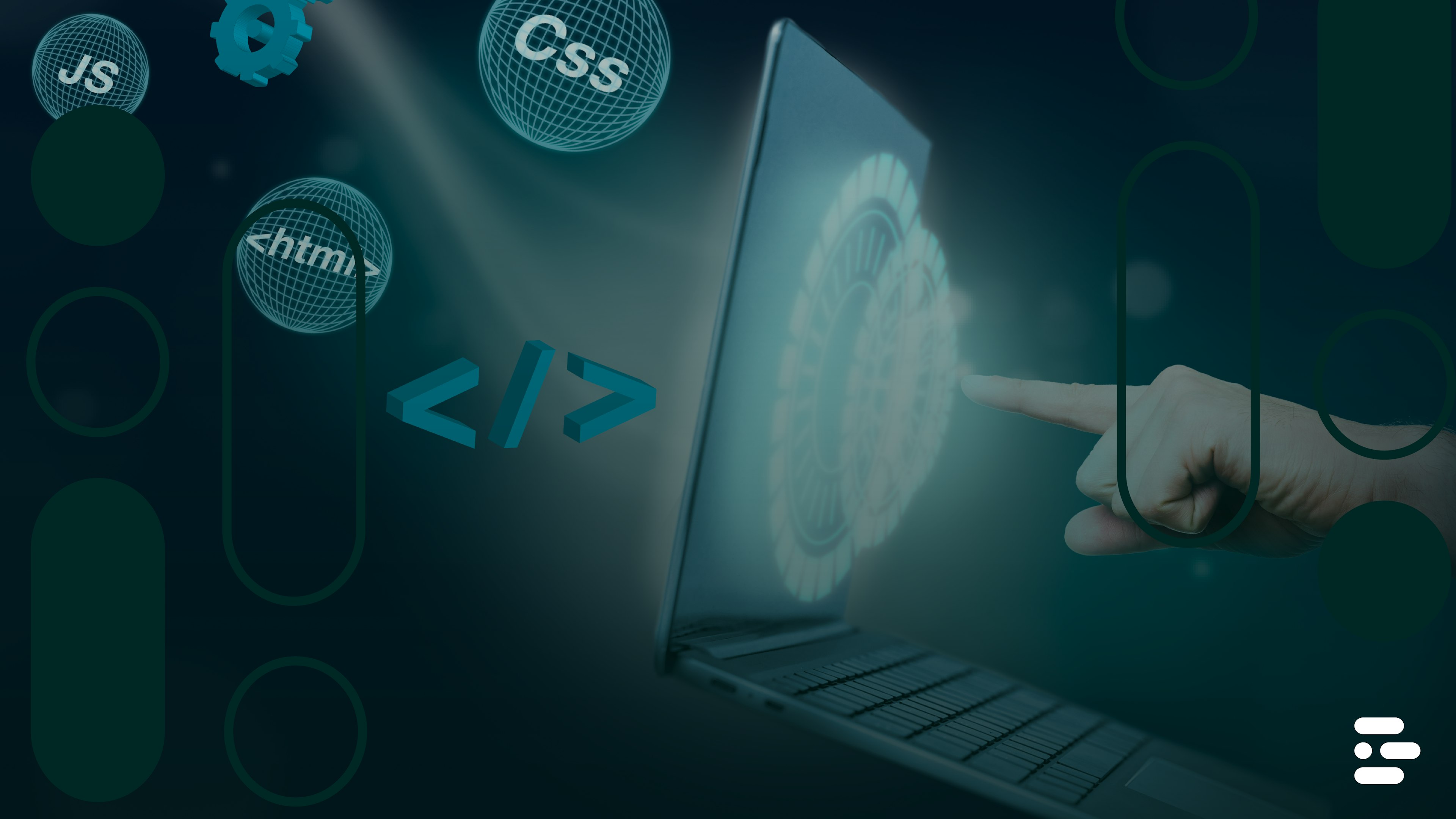Green Coding: How Sustainable Software Engineering is Combating Climate Change


As technology continues to become a part of every area of our lives, there is a need to tackle the issue of climate change in the software industry. Technology giants like Microsoft, Google, Amazon, and IBM have developed initiatives that aim to reduce the environmental impact of software engineering by applying green coding practices.
Sustainability is becoming a hot topic among CIOs and software engineers. Many Fortune 500 companies have made commitments to reduce their carbon footprints by 2030. A fundamental way to achieve this is to reduce the amount of carbon emissions by implementing green coding — using green software engineering practices to deploy software solutions. With this approach to sustainable coding, there is an improved reduction in energy consumption and greenhouse gas emissions, also known as GHGs.
There are millions of lines of software running on our devices. To put that into perspective, 97%97% of Americans own a mobile phone. Imagine the lines of code running on these devices when they make a phone call, use software applications, or even just sit idle. In addition, data centers account for between 2.5% and 3.7% of global GHG emissions. Businesses need to start taking actionable steps to combat the issue of climate change by embracing sustainability management solutions.
In this article, we will discuss the principles of green coding, the importance of green software engineering, and how businesses can maintain sustainable practices.
What is Green Coding?
Green coding is the practice of writing code in a way that minimizes energy consumption and overall environmental impact. It represents an environmentally sustainable approach, assisting organizations in reducing greenhouse gas emissions. This, in turn, helps mitigate the rising climate change crisis and supports sustainability goals.
Green coding is a subset of green computing, a broader term in the software industry that encompasses efforts to reduce the carbon footprint across various areas of software operations. This includes aspects such as managing data centers, streamlining daily team operations, and refining software manufacturing activities. Organizations committed to green coding employ green software to implement eco-friendly and energy-efficient practices.
Why Is It Important for Software Developers to Practice Green Coding?
Typically, when most people hear 'sustainability', they think of recycling and clean environments. However, in the world of technology, sustainability has a deeper and often overlooked meaning. With the growth of digital consumption, the demand on servers and data centers is also growing. This means that there is a tendency for both the volume of data and the energy required to maintain this data to increase rapidly.
In fact, it's estimated that by 2025, the information and communications technology sector could consume as much as 20% of the world's electricity and be responsible for up to 5.5% of all carbon emissions. Green coding is the ideal solution to manage and reduce energy consumption and carbon emissions from software products. It is a new concept that advocates the use of eco-friendly coding practices. By applying green coding practices, software companies can foster better environments and conserve resources.
The 8 principles of green software engineering

Green software engineering principles serve as a guide for implementing green code practices. It encompasses the creation, design, and deployment of sustainable software solutions.
Green software engineering is categorized into 8 different areas:
Carbon: Build software applications that are carbon-efficient.
The Carbon principle highlights the need for software engineers to reduce carbon emissions when building digital products. Carbon emission is a by-product of any activity. Software developers can optimize code to use less energy, utilize hardware products that do not consume a significant amount of energy, and employ other energy-saving techniques.
Electricity: Build software applications that are electricity-efficient.
The principle of electricity aims to reduce the amount of electricity that software systems use. This can be achieved by creating digital systems with low energy consumption, ensuring software uses low power, and adopting power management strategies to reduce energy consumption.
Carbon Intensity: Consume electricity with the lowest carbon intensity.
By using electricity from renewable energy sources like hydropower, water, solar, and wind energy, there will be a reduction in carbon intensity. Carbon intensity is measured by the amount of carbon emissions produced per kilowatt-hour.
Embodied Carbon: Build applications that are hardware-efficient.
Embodied carbon describes the carbon emission from building a device from the point of creation, use, and disposal. The principle of embodied carbon advocates utilizing recycled resources, reducing waste, and using hardware-efficient applications. Throughout the software development lifecycle, businesses should consider the environmental impact of each digital product created.
Energy Proportionality: Maximize the energy efficiency of hardware.
Energy proportionality measures how much energy is used by a computer system versus the useful results produced. An optimized computer system is energy-efficient. That is, an idle computer has low utilization, whereas a device operating at maximum capacity is highly utilized and has a high utilization percentage.
Prioritizing hardware that delivers the best performance for the least amount of energy consumed is crucial. For example, optimizing your IT infrastructure—also known as green computing—by using cloud computing can streamline operations and reduce the number of physical servers for operations.
Networking: Reduce the amount of data and the distance it must travel across the network.
Networking efficiency involves optimizing data transfers and reducing data redundancy. Streamlining data routes and reducing unnecessary data transmissions can reduce energy use and associated costs. For example, cloud-based DevOps cut down the amount of data needed to move across the network and reduce the general network's energy use.
Demand Shaping: Build carbon-aware applications.
Applications should be developed with the consideration of their carbon impact. Demand shaping is about the supply of carbon. It involves regulating energy consumption to align with periods of low-carbon electricity. Simply put, it is the spread of workloads in a manner that evens out energy consumption. This can be done using load balancing, resource scheduling, and workload management.
Optimization: Focus on incremental optimizations that enhance overall carbon efficiency.
The first step to building sustainable software is to perceive green coding as a marathon, not a sprint. It is a long-term journey that will contribute to software companies and the software industry at large. Implementing a consistent strategy that ensures carbon efficiency across your entire tech stack, user experience, data center structure, and other areas will yield significant results and align with sustainability practices.
These sustainability changes can be applied by first carrying out a decarbonization plan in your software development process and examining which areas your application design can be optimized. So, instead of making broad changes, focus on iterative improvements. Each step, no matter how small, contributes to a more carbon-efficient application when compounded over time.
Benefits of Green Coding in Software Engineering
Climate change affects everyone and can impact our environment in a harmful way. There are several benefits to implementing green code practices in your development team. By encouraging your team and answering their burning questions, you can contribute to building sustainable solutions.
The benefits of practicing green coding include:
Energy Efficiency
Implementing green coding software engineering practices can assist in lowering energy consumption. By opting for energy-efficient coding practices, cloud computing, and optimizing IT infrastructure, businesses can reduce their energy consumption and carbon footprint.
Enhanced Sustainability Goals
Many organizations are currently working towards their net-zero emission goals and initiatives. For example, sustainability is one of Google's core values. They are pursuing a clean energy goal to have net-zero emissions across their value chain. Practicing green coding can help companies achieve their sustainability goals faster.
Increased Revenue Opportunities
Using green coding in software development can help save energy consumption; the less you use, the less you spend. With this, companies can report a higher operational margin than industry peers due to less energy consumption.
Faster and Improved Iterative Development
Green coding can save software developers the time of writing a large amount of code and can simplify the hardware infrastructures used in companies.
By reducing the amount of code software developers write, they have the tendency to produce better and improved digital products.
Attract & Retain Top Tech Talent
As the world gradually moves towards embracing sustainable software, a company that practices green coding will attract the right tech talent that aligns with the business values. People want to be associated with companies that contribute to a better environment.
Brand Loyalty
By showing concern about environmental issues, millennials, and other generational cohorts might become attracted to a brand. For example, Unilever is working on eliminating fossil fuels and focusing on using renewable energy. Also, Apple recently announced its first carbon-neutral product and reported its new approach to product decarbonization to reduce greenhouse gas emissions throughout the product lifecycle. Businesses understand the need to combat climate change and foster a healthy environment, this in turn, can result in brand retention and loyalty.
Long Lifespan
Building a software application with the intention of sustainability enables longevity. This approach will reduce the need for constant updates and replacements and will eliminate waste in the long run.
Regulatory Compliance
Government regulations and environmental standards align with green software engineering; thus, practicing green coding will eliminate any form of penalties and legal problems and guarantee compliance. By including green coding practices in their software development process, companies can be assured they are compliant and energy-efficient.
Conclusion
Green coding practices are beneficial for sustaining a healthy environment. Writing code and building decarbonized digital products will foster eco-friendly practices. By implementing green software engineering, your business will benefit from reduced IT hosting costs, and payments for cloud services will be minimized.
Gradually adopting these practices in your business may take time and necessitate changes, but it will yield excellent results in the long run. This will require structural and cultural shifts. From implementing IT-efficient infrastructures to adopting cloud-based DevOps, this process will require a top-tier software development team. Augment your team with the right software developers.
Subscribe to our newsletter
Stay informed with the latest insights and trends in the industry
Content
You may also like


